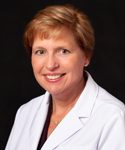The 2019–2020 legislative cycle in the states holds real hope and opportunity for critical reforms to protect rheumatology practices and patients. It is important to note that because of the state legislative process, bill passage almost always comes later in the legislative session. Although the rheumatology community has not yet seen many official wins, early…
Gearing Up for State Legislation in 2019: 5 Issues that Need Your Attention
With a number of new legislators and new governors sworn in this month, 2019 promises to be an exciting year for state-level rheumatology advocacy. “Now is the time to reach out and share our top issues with new legislators in your state,” suggests Joseph Cantrell, ACR senior manager of state affairs. 2019 Priorities ACR Affiliate…

AFLAR Experts Discuss Highlights, Hurdles in Rheumatology in Africa
CHICAGO—Rheumatology physicians and researchers from Africa said the field’s resources and medical literature on the continent are slowly expanding, but they repeatedly lamented that the millions who suffer from rheumatic diseases there have major obstacles to overcome to access care. Their reviews and assessments—sometimes grim and sometimes hopeful—came in a session that was a joint…

Beth Jonas: Making a Difference in Training & Workforce Support
Early in her medical school career, Beth Jonas, MD, FACR, was fascinated by the multi-system and chronic nature of rheumatic diseases. The field of rheumatology offered her the chance to make long-term connections with the patients she cares for, and she says her early instincts have led her to a career that has not disappointed….

Rheumatology’s Challenges Spawn Opportunity
In our fast-paced world, a great deal can happen in 12 months. Reflecting on this past year and my service as ACR president, I find this has certainly been the case. For the foreseeable future, it appears the factors that influence our ability to effectively care for our patients with rheumatic and musculoskeletal disease will…

The First Step: Pay Equity in Medicine
“Men work harder than women.” My mother is a pediatrician, and I have two sisters—one is a dermatologist, and one is a real estate attorney. Therefore, I think understandably, this message took me by surprise. Of late, I have been particularly awed by my lawyer-sister, with whom I catch up when she is taking the…

Registered Nurses Provide Valuable Support to Rheumatology
In a rheumatology practice, registered nurses take on multiple roles, from administrative tasks to engaging in patient support and assessment. They can aid rheumatologists and help provide the best care to patients…

Why & How to Add Advanced Practice Clinicians to Your Practice
More than two decades ago, Charles King, MD, was completing his final year of residency in internal medicine, fairly confident he was headed for a career in gastroenterology. Then he took a rotation in rheumatology. The rest, as they say, is history. “It’s a complicated field, and it requires a balance of left brained-ness and…

Advanced Practice Clinicians May Help Close the Workforce Gap
GLENDALE, ARIZ.—Arizona is a microcosm of America’s challenges in reconciling the rheumatology workforce to growing patient demand, as quantified in the ACR’s Workforce Study of 2015.1 So it was timely this year for the Phoenix Rheumatology Association to sponsor its 1st Annual Strategic Training for Rheumatology Advanced Practice Clinicians Symposium. (Note: Advanced practice clinicians [APCs]…

The Choose Rheumatology Experience Addresses Workforce Shortage
Medical students and residents are choosing careers in rheumatology, thanks to an annual event hosted by the Rheumatology Research Foundation during the ACR/ARHP Annual Meeting. The Choose Rheumatology Experience, formerly known as the Student and Resident Experience, is a daylong event designed to help future physicians and health professionals navigate the Annual Meeting. Cultivating interest…
- « Previous Page
- 1
- …
- 5
- 6
- 7
- 8
- 9
- …
- 22
- Next Page »